Author: Marshall Schott
Since realizing how simple hard cider is to make nearly 5 years ago, I tend to keep a keg on tap most of the time, especially since my wife actually drinks it. Using cheap store-bought apple juice, I’ve made numerous variations of hard cider– dry, sweet, dry hopped, fruited, and acidified. Each batch taking maybe 10 minutes to “brew” and costing around $30, I view hard cider as a fun and relatively safe ground for experimentation.
Back in March, my wife, Laura, and I had the pleasure of visiting New Zealand where I was a guest speaker at their annual homebrewers conference. As we toured the Wellington and Nelson areas, we made a bunch of brewery stops where it became very clear their hard cider game was a lot stronger than what we’re used to, a thrilling discovery for my wife who isn’t a big fan of beer. I can’t recall a single brewery or pub we went to that didn’t have at least 1 hard cider on tap, in fact most had multiple options to choose from. In general, the Kiwi ciders we tasted tended to be perceptibly sweeter and more full flavored than American ciders, though not cloying at all, just not nearly as wine-like as some of the dry craft ciders available in the states. Laura was particularly fond of Cloudy Apple from Mac’s Craft Beer Bar in downtown Nelson, a 4.3% ABV cider that was moderately dry with a pleasant tartness and assertive apple flavor. As a homebrewer with a wife who doesn’t much like beer, I jotted down some impressions in preparation for trying to build something of similar quality myself.
Kiwi ciders we tasted tended to be perceptibly sweeter and more full flavored than American ciders, though not cloying at all, just not nearly as wine-like as some of the dry craft ciders available in the states. Laura was particularly fond of Cloudy Apple from Mac’s Craft Beer Bar in downtown Nelson, a 4.3% ABV cider that was moderately dry with a pleasant tartness and assertive apple flavor. As a homebrewer with a wife who doesn’t much like beer, I jotted down some impressions in preparation for trying to build something of similar quality myself.
After a couple experimental batches, I felt like I was getting close to our desired goal, which was confirmed by how quickly those kegs blew. While those first few batches were left un-fruited, I thought something with a nice berry kick would be great for an upcoming neighborhood Christmas party I was voluntold to make cider for.
| Making Hard Berry Cider |
I know some view the use of store-bought apple juice for making hard cider as downright stupid, which is cool, to each their own, but it has worked great for me. I’ve made hundreds of gallons of hard cider using the stuff and love the results, especially considering how easy it is to make.
INGREDIENTS
5 gallons preservative-free apple juice
1 pack Danstar Belle Saison yeast
4 lbs frozen mixed berries
3 cans frozen apple juice concentrate
15 mL 88% lactic acid
0.5 tsp potassium metabisulfite (Campden)
2.5 tsp potassium sorbate
PROCESS
Wanting this cider to be beautifully clear in time for the party, I made it 5 weeks ahead of time using 5 gallons of the cheapest preservative-free apple juice the local grocery store had on the shelves.
I sanitized the nearest fermentation vessel before pouring the 5 gallons of juice into it.
Next, I dipped a pack of Danstar Belle Saison in some sanitizer then cut it open and poured the yeast on top of the juice in the fermentor.
Given my choice of a Saison yeast strain and the fact the temperature in my garage stays between about 60°F/16°C and 68°F/20°C this time of year, I left the cider to ferment on my workbench.
I noticed airlock activity less than 24 hours later and, as is typical when I ferment apple juice with Belle Saison, fermentation progressed somewhat slowly. The morning of the 12th day since pitching, the airlock still bubbling at a steady pace, I pulled the frozen mixed berries out of the freezer and placed them in a bowl to defrost– the bags leak and berry juice stains, hence the bowl.
Throughout that day, I’d intermittently squeeze the berry bag a few times to give the fruit a good mushing. Just after midnight, when returning from a wholesome evening at my neighbor’s bar, I dumped the fruit slurry directly into the fermenting cider. Fermentation activity kicked up by the following morning and continued for another 4 days, but I left it alone for an additional 3 days to ensure complete attenuation. Then, I added the potassium sorbate and potassium metabisulfite, used to halt any further yeast activity.
After adding the chemicals and giving the cider a gentle swirl, I placed the fermentation vessel in my chamber set to 32°F/0°C to cold crash. After 3 days in the cold, it was time to keg the cider. Having already melted the apple juice concentrate by placing it in the fridge a week prior, I poured their contents in the bottom of the keg.
This is also when I added 15 mL of lactic acid, which I’ve learned over multiple batches imparts just the right amount of tartness without becoming sour.
I started kegging by using my typical method of running the cider through a tube attached to the bottom valve into the keg via pin lock disconnects. However, what I failed to consider was that the uncrushed berries fell to the bottom of the fermentor and easily clogged the valve. Not an issue since I had a sterile siphon starter handy, which worked great.
Everyone coming to the party prefers their hard cider to be sparkling like soda, present company definitely included, so I placed the filled keg in my keezer and burst carbonated with 50 psi of CO2 for a full 24 hours before reducing the gas to 20 psi where it would remain. Even after just 2 days in the keezer, the cider was clear and well carbonated, though it was looking mighty fine after a week of conditioning.
| IMPRESSIONS |
It’s true and completely stereotypical that my primary impetus for making hard cider is to appease the non-beer-drinking people in my life, namely my wife and those of Jersey and Tim. I could sit here and write about how fantastic this berry cider was with its melted ICEE-like flavors punctuated by the perfect balance of acidity and sweetness, but we all know that’s not what matters.
I asked my wife if she’d be cool with writing up her thoughts on the cider, she said no, so I served her a glass and asked for her impressions.
It doesn’t taste like beer, so I like that. It’s gotta be crisp and not too sweet, but I like some sweetness, just not so much that it coats my mouth. I want to have more than one, and I could easily have more than one of these, it’s really good, probably my favorite you’ve made so far. I especially like that it’s a little more tart than usual.
And she did have another glass, which left me feeling pleased as pudding. Given the incredible experience of being in a gorgeous foreign country, I’m not sure anything I make will ever compare to what she had while in New Zealand, but it sure feels great knowing I created something Laura truly enjoys. Especially since it only took about 20 minutes to make!
During my last brew day, the cider having been on tap for 3 days, a couple buddies stopped by for a sample, one who had little experience with hard cider and the other Jersey. The former remarked that he wasn’t expecting the cider to be so easy to drink, as the only other examples he’d tried were either way too sweet or tasted like wine. Jersey just wanted more.
I’ve been making hard berry cider for awhile, most have come out great, but I think the dose of lactic acid really brings things to life and plan to experiment with even higher amounts in future batches. Regardless, whether one chooses to add fruit, acidify, ferment with ale yeast, or use unpasteurized juice, hard cider is delicious and definitely worth making!
I’ve receive questions often about my approach to cider making, particularly in regards to different flavors I’ve played with and tips for ensuring a smooth process. For the sake of clarity and breadth…
VARIATIONS ON A THEME
Tart & Hard Apple Cider
The first batch of hard cider I made upon returning home from New Zealand was my attempt to match the tartness of Mac’s Cloudy Apple. Relying on the same store-bought apple juice, I fermented it warm with a single pack of Saflager S-189 then, after adding the sorbate and metabisulfite, backsweetened with 3 cans of apple juice concentrate and added 10 mL of lactic acid at kegging. The finished cider maintained a slightly hazy appearance and tasted awfully close to the intended target. One neighbor even commented that it was her favorite batch I’d made to date.
Tart Cherry Hard Cider
Walking through Trader Joe’s one day, I saw a jar of 100% tart cherry juice and thought I’d try adding it to a cider I had fermenting at home. After sanitizing the jar, I poured all 32 oz into my fermentor toward the end of fermentation. Suffice to say the cider didn’t taste much like cherries at all. Then during a trip to Costco soon after, I noticed frozen tart cherries on the shelf and my wife suggested we try that out. At 3 lbs of fruit rather than 4 lbs, I was a little concerned, but in the end, it worked out beautifully. The frozen cherries gave the cider a pleasantly soft yet pungent cherry flavor that melded with the slight nuttiness from the apple juice and Saison yeast to create the impression of cherry pie. Absolutely delicious!
TIPS FOR MAKING HARD CIDER
- If it’s clarity you seek in your cider, fining with gelatin does seem to work fairly well, despite what I’ve read to the contrary. That said, I only fine my non-fruited ciders, as even when using the less flocculant Belle Saison strain, the fruit seems to encourage the cider to clear up.
- Fruit will eventually drop to the bottom of the fermentor, especially if one chooses to cold crash, which can make using bottom situated spigots a pain in the ass due to clogging (ahem). For this reason, I’ll be sticking to 6 gallon PET carboys when making cider henceforth since it allows me to keep the tip of my racking cane above the fruity trub layer.
- Apple juice concentrate is dense stuff that will remain at the bottom of the keg unless adequately incorporated into the fermented cider. I developed the following simple approach after I pulled a half pint of straight concentrate the first time I tried backsweetening. After filling the keg, immediately seat the lid with a burst of gas then rock it back and forth for a good 3-4 minutes, turning it upside down multiple times, before placing it in the keezer. Hasn’t failed me yet.
- Apple juice concentrate is also very sweet stuff that yeast can continue to ferment, even in cool environments. When I was first getting into cider making, someone told me that sorbate and metabisulfite weren’t necessary when backsweetening if the cider would be stored cool. I keep my keezer at 40°F/4°C, the lower end of recommended temperatures, and figured I’d make a batch sans chemicals a few months ago. After a week in the keg with 3 cans of concentrate, I noticed my cider not only began to look hazier but the carbonation was getting out of whack. Having never experienced this before, the only culprit I could think of was the lack of chemicals to halt yeast activity. I could be wrong, but for less than $1 per batch, I’ll stick with what I know works.
- For those who don’t have the luxury of kegging, I’m really not sure what the best route is to accomplishing both backsweetening and carbonation. Adding the amount of concentrate I use to a cider without using the aforementioned chemicals will certainly lead to secondary fermentation, which if packaged too soon can produce bottle bombs. One possible solution is to package the cider still then use something like a SodaStream to carbonate at time of drinking. I can’t vouch for this because I’ve never tried it, but I have heard from folks who say it works pretty well.
If you have thoughts about this recipe or experience making hard cider yourself, please feel free to share in the comments section below!
Support Brülosophy In Style!
All designs are available in various colors and sizes on Amazon!
Follow Brülosophy on:
FACEBOOK | TWITTER | INSTAGRAM
If you enjoy this stuff and feel compelled to support Brulosophy.com, please check out the Support Us page for details on how you can very easily do so. Thanks!


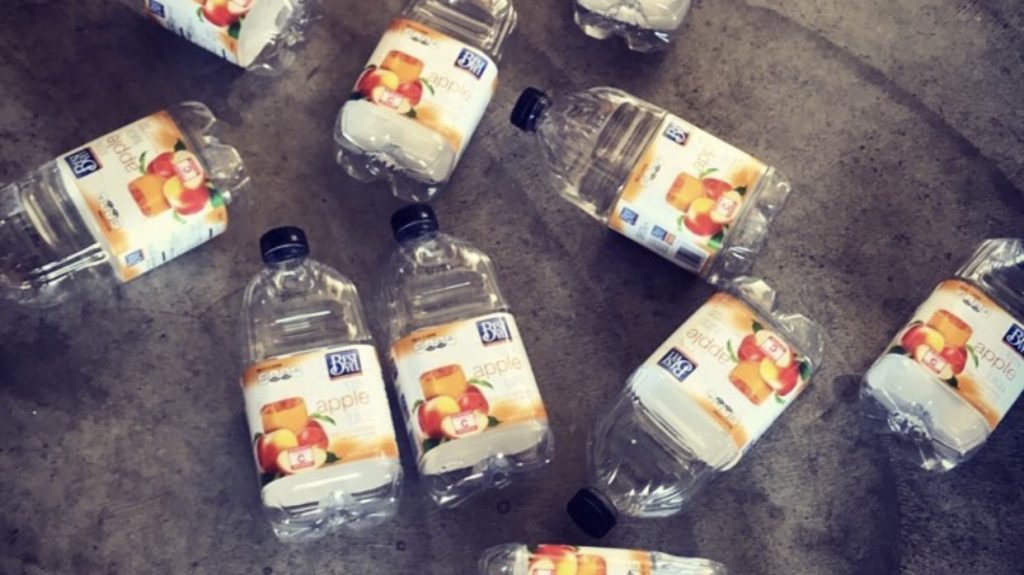
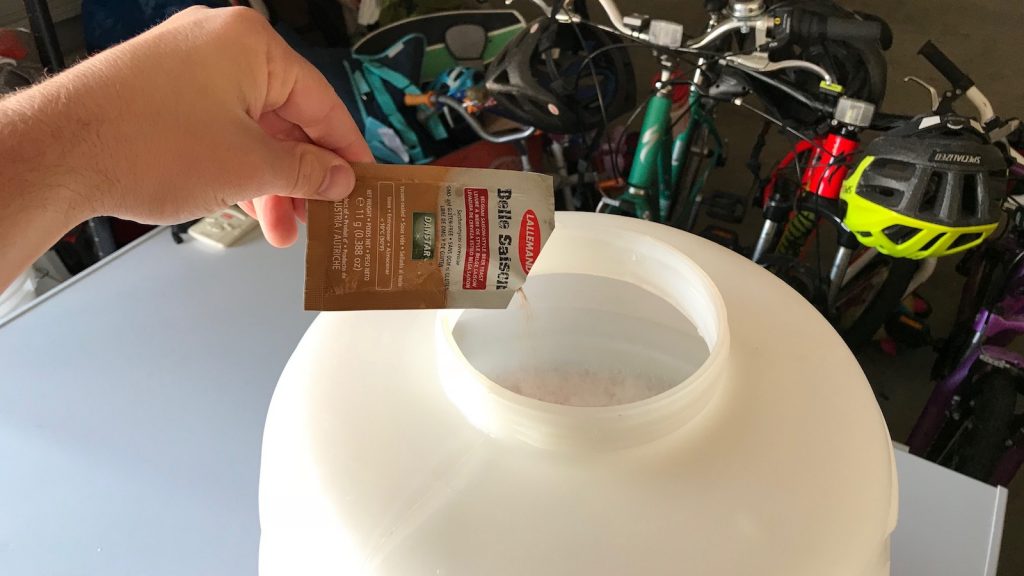
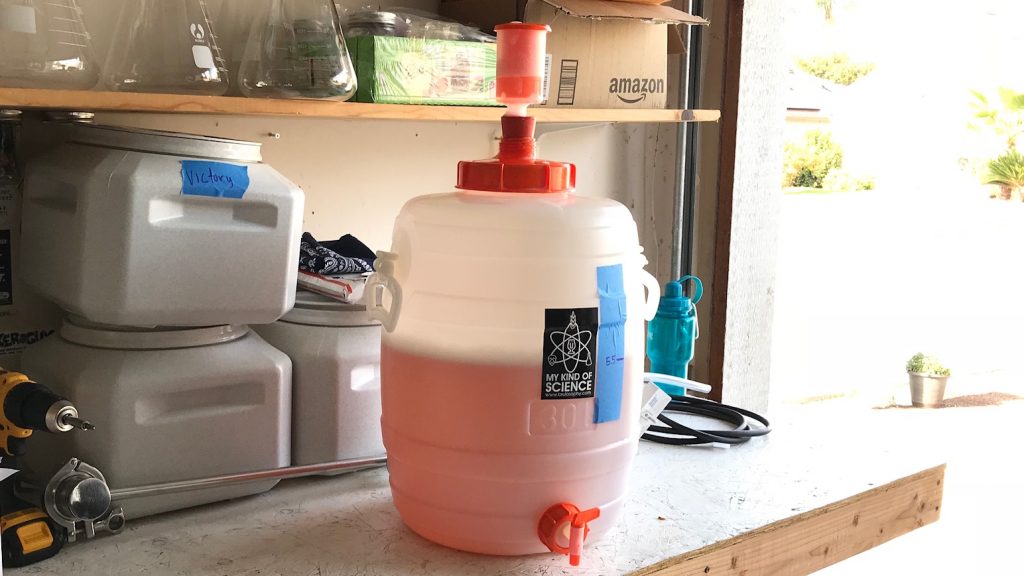
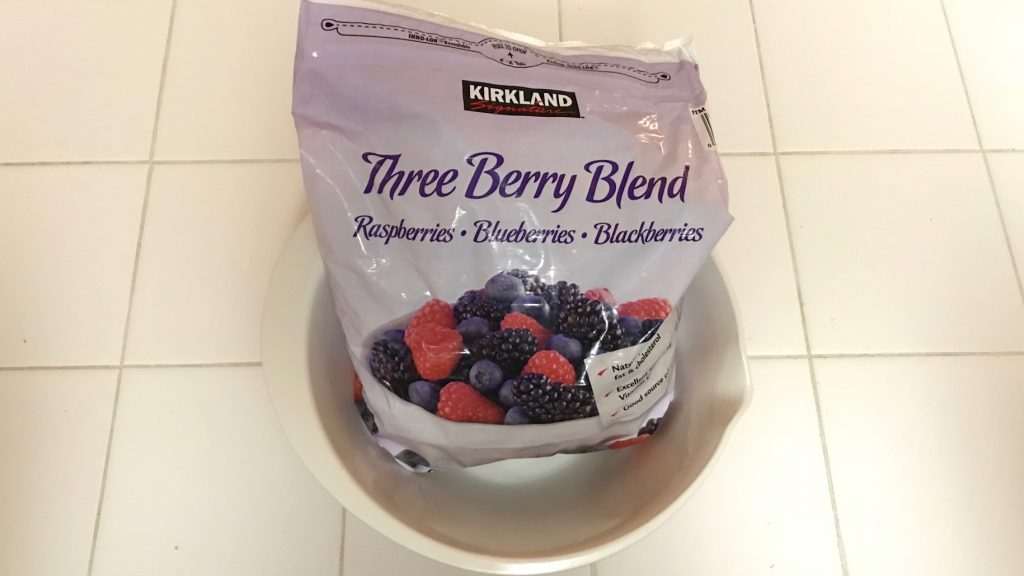
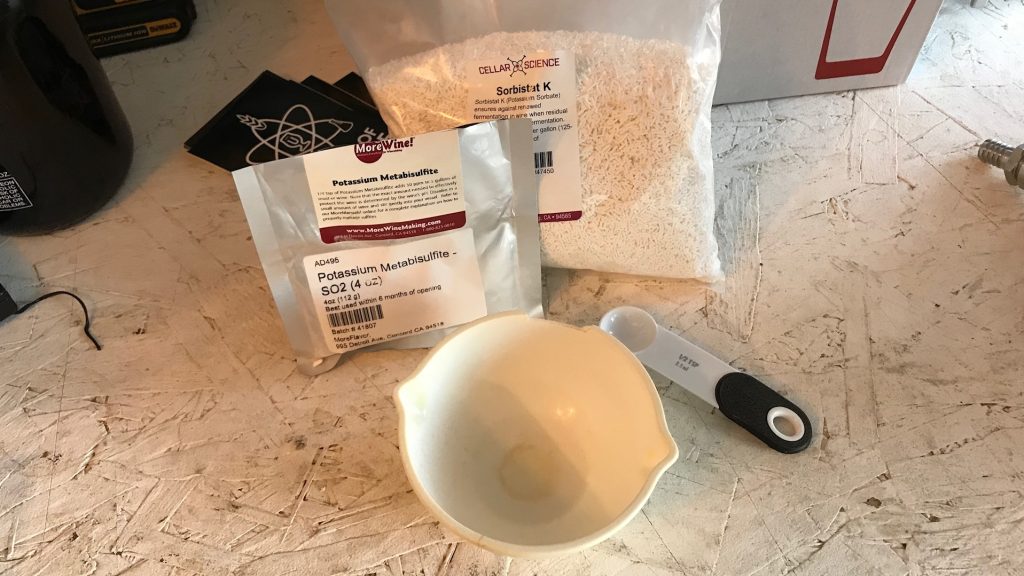

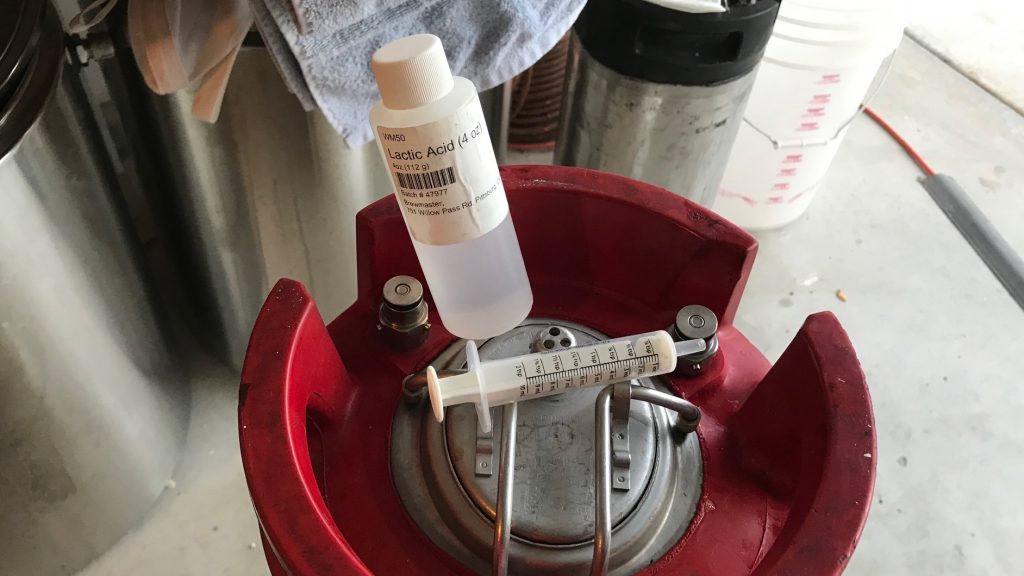
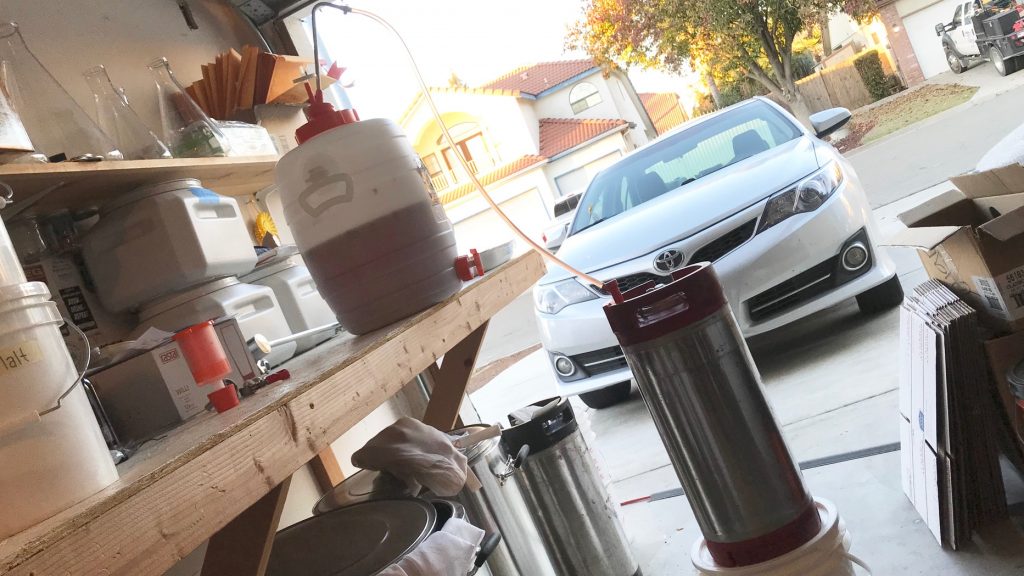
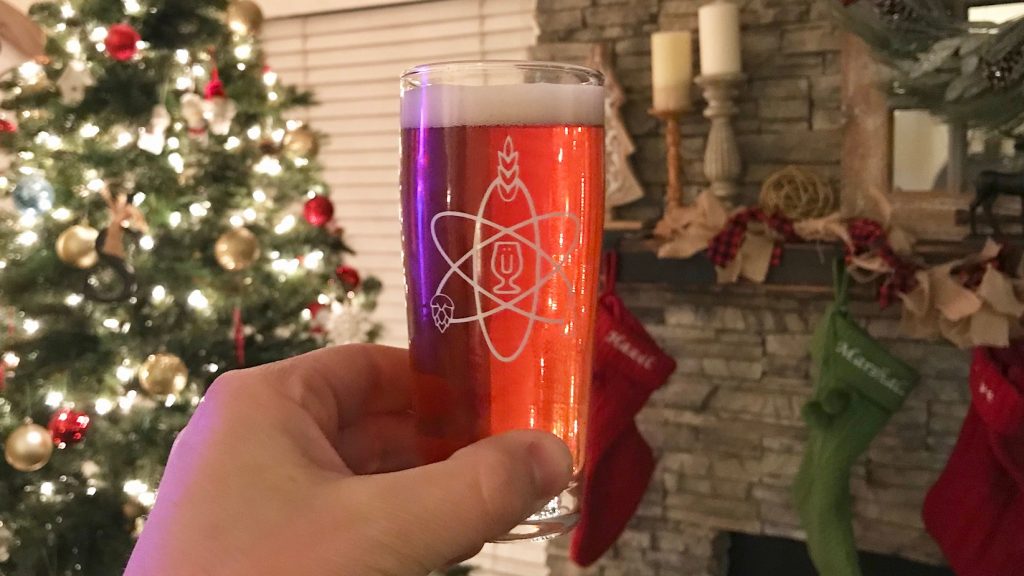
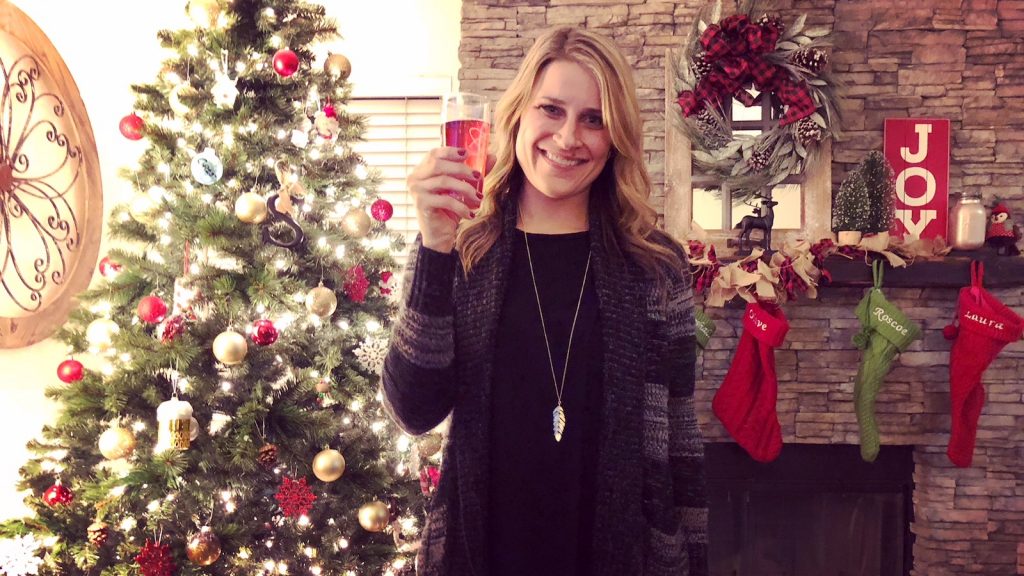










101 thoughts on “Brü It Yourself | Sparkling Hard Berry Cider”
When you bottle your cider, your could add sorbitol as sweetener
Very nice article, both the write up and the contents, major props! Say, the Mad Fermentationist mentioned a couple times that lactic acid alone gives a bit of an artificial flavor (and my experience corroborates that), and he suggests to also add a small amount of acetic acid (vinegar) to create a fuller flavor. Have you tried variations along this idea? Cheers!
When I make my “tart” beer I found using the tree “Acid blend” with a touch of added citric acid gave a tartness that didn’t taste “manufactured”. When I tried lactic alone it always seemed to taste like it had acid added.
malic acid works very well for adjusting cider acidity. That is the predominant organic acid in apples
To get a back sweetened cider when bottling, you can use a Splenda to taste and then add your bottling sugar for carbonation. The yeast will eat through the bottling sugar and carbonate it but won’t eat the Splenda. Works great..
A dash of Apple concentrate to the glass at consumption is what I do when bottle conditioning. Similar to sugar syrup in cocktails. The bonus is my partner likes it westcountry dry and I prefer a little sweeter. This lets everyone adjust to how they prefer it.
i tried some tart cherry juice concentrate in my most recent hard cider. It was SO delicious. I highly recommend it. You can buy it online. I got mine from King Orchards in Michigan.
My last batch I forgot to use pectin enzymes… took a really long time to clear, but I also tend to use cloudy cider as my source. I also like to add the skins of a few pounds tart apples after the first racking… seems to help bring up the apple flavors and aromas a bit more. I think I got that idea from Drew’s Cider book. Great post as always Marshall!
What was the gravity before and after backsweetening?
I didn’t check on this one, but I have checked in past batches. 0.999 SG before adding fruit and backsweetening. Adding the fruit adds more sugar, I’m not sure how much, but after I let that ferment out, the cider has always been around 1.002 SG. After adding 3 cans of concentrate, the cider bumps up to ~1.009 SG, in my experience.
What was the OG and FG of this recipe WITHOUT taking into consideration the berries? In other words, what is the OG of store bought apple juice and the FG BEFORE adding the berries on day 12? Since the variety of berry’s and their sweetness can greatly vary, I’m wondering if my OG and SG are close to what you had for the plain apple juice. I made a starter and used a stir plate, and fermentation went crazy right away. I think I may be ready to add the berries after day 6 because airlock activity has slowed and yeast has dropped.
1.050 OG, 0.999 FG
I am curious what the cider tastes like if you skip the back-sweetening with the apple concentrate.
I wondered the same thing when I recently made a cider from fresh juice from the orchards of Big Bear Mountain. So I bottled two versions: plain and back-sweetened and shared them with a chef. Chef liked the plain version better but felt that most people would prefer the rounder, slightly sweeter back-sweetened version. I back sweetened with flash-frozen, no-preservative apple juice and maple syrup (as is my Canadian duty).
I actually make the same exact cider except I only backsweeten with one can of concentrate. It is very dry and almost like champagne. I don’t like sweet ciders.
I tried a Sodastream once for beer and it did not go well. The main user was not impressed. I’m sure there are a few tricks but I will not attempt again unless I get a spare unit.
I’m curious if you’ve noticed any flavor disadvantages to using the cheapest preservative-free apple juice. I’m admittedly surprised that you’re getting such good results with such cheap stuff. Granted, I’m also very, very attracted to the cost associated with such cheap juice, and I’m quite likely to give this a try soon!
It’s just apple juice. I’ve used Tree Top too and totally prefer the cheaper stuff because… well… it’s cheaper and achieves the same results 🙂
You should visit the UK. Even here in Cardiff we have at least ten pubs with half a dozen different guest (rotating) ciders. A couple of places have ten or more and one around thirty. Most served under gravity and with minimal carbonation too. You can also get the commercial mass market keg & fruit ones if that rocks your boat…
Hi Marshall
Unfortunately I missed meeting you in Nelson at the last HB conference.
Have been dabbling in bottling cider and found the easiest way to have sweetness and carbonation is fermenting with lactose (unfermentable sugar) until cider is fully fermented out, about 500gm to 24l works for my audience.
After cold crashing I gently stir in about 500-600ml of preserve free berry cordial/concentrate to act as priming sugar and bottle accordingly. More recently I tried using apple juice the same way as the cordial but recalculated the quantity to factor in different sugar levels and it worked quite well, this is also a good stage to add hops if you are that way inclined.
ABV comes out around 6.7-6.9.
Fermentation can take up to 3-4wks and I recommend bottle conditioning for another 4wks. Haven’t had a bottle bomb yet but recommend using PET bottles for safety’s sake as some can feel quite tight.
Finally, it’s best to drink these rather quickly as I find rancio/oxidation characteristics kicking in after 3-4mths from being ready to drink. Still need to work out how to avoid/reduce this happening.
Cheers
George
Awesome! I have done a couple cheap apple juice wines with champagne yeasts. Never added much other than sugar. Always ended with super dry rocket fuel. I will give your exact recipe a try. Love the simplicity and use of inexpensive ingredients.
Rent a grinder and press and buy some apples. Blend bitter, sharp, and sweet the way you like. Read Proulx and Lea.
I’m kind of surprised there’s no sanitization involved with the berries before adding. Is this because of the alcohol already there from fermentation?
I considered this the first time I used these berries, but read somewhere that the flash freezing process is enough to kill most if not all spoilage microbes. I’ve never had an issue with, which is anecdotal, I know, but it works for me.
Good to know, looking forward to trying this out!
you don’t have to worry. the pH is pretty low on these usually, and the freezing really hurts most of the spoilage stuff. i use the same procedure with beer with great results. NO BOIL! if you are worried, you can try mixing in some sulfites, but if using beer yeast, you might kill it off.
Thanks for the write up. Seeing as I can’t seem to make any palatable beers for my darling wife I may give this a whirl.
Slightly off topic, though still worth posing the question because I can’t seem to find any reliable information elsewhere. I know it doesn’t particularly matter for non-hopped beverages, but do Speidel fermentors protect from light damage?
Good question. To be honest, I don’t know. The HDPE is very opaque, I’d imagine it’d keep most UV out, but I’d probably still recommend fermenting in an environment that doesn’t have direct sunlight.
Done.
If the wife likes it, then I have to at least try it for the next “brew” day. My wife loves cider.
Thanks, Marshall!
I’ve had good luck w/ using the Trader Joe’s Tart Cherry juice to backsweeten, otherwise, like you mention, all the cherry character dissolves into the ether.
I considered that.
This is very similar to my technique, but to get the maximum apple flavor I backsweeten with more of the juice I started with instead of concentrate. Since I live in apple country, I have plenty of high-quality fresh-pressed juice available, which is like night and day compared to store-bought clear juice.
To keep the final juice addition from watering-down the cider too much, I add canned concentrate prior to fermentation to boost the OG (and therefore my ABV). When the juice gets added back at kegging, it brings the ABV back down to the 5% range that I like to target. I add about a half-gallon of juice to every 2 gallons of fermented cider for my final blend.
Other tips – if you’re starting with orchard-pressed juice (aka “Cider” in much of the US, even though it’s not the hard stuff yet), then I find that pectic enzyme at pitching helps get a cider to clear more quickly. Cider tends to produce a lot of sulfur during fermentation, but nutrient at pitching helps to reduce that. That means you generally dont have to worry about waiting for the farty/eggy aroma to dissipate after fermentation is complete. Finally, while many beer yeasts work fine, I find that white wine yeasts like D-47 and Cote de Blancs leave the most apple character behind.
I can get from orchard to a clear, carbonated cider in the keg in under 3 weeks using the method above. This ends up similar to a draft-style cider like Angry Orchard or Woodchuck, but you can dial the sweetness way down to a more “adult” level. This method also gives way more fresh apple flavor than other brewing methods. I’ve stopped stabilizing with sulfate/sorbate and just keep the keg cold. Fermentation may creep down a few more points of FG over time, but I’ve never had a keg last long enough to get down to bone-dry levels.
Thanks for the tips. Due to a lack of brewing free-time lately, I took a stab at this recipe and on day 2 I noticed the butt smell and was worried I screwed something up. I did not add nutrients at pitching but I will next time. Hopefully it cleans up with time, I don’t want to be drinking fart juice in a few weeks.
The sulfur will dissipate with time, but if you’re bottling you want to wait for most of that smell to clear up or else it will get trapped in the headspace as it off-gasses. If you’re kegging you can just blow it off by hitting it with gas and venting it off a few times until the smell is gone.
Thanks, Eric. I appreciate the advice. I don’t know why but I can’t reply after you. I am kegging so I will try several gas exchanges as you said.
Brian, did your sulfur smell clear up? I’m on week three and it still smells bad.
Jonathan – Yes, the sulfur smell definitely cleared up. Other information I found online advised to allow Saison a full month to clean itself up. Based on my one-time experience, I would have to agree. I used Wyeast 3724 instead of the dry yeast suggested for this recipe. I am a few days away from cold crashing yet and all appears to be going very well. Sorry for the late reply but hopefully you have had good observations since your post.
There’s a great thread on cider yeast here :
https://www.homebrewtalk.com/forum/threads/results-from-juice-yeast-and-sugar-experiments.83060/page-21#post-5710045
His favourite is Brupak’s Ale (only available from the UK it seems) but he also likes Wyeast 3056 Bavarian Wheat Blend, S-04, Nottingham/Gervin’s, WLP041 Pacific Ale, US-05, S-23, 3333 German Wheat (WLP380), WLP005 Ringwood (1187) for different purposes – US-05 is best for preserving the fruitiness of a raspberry addition, 3068 for a sweeter cider, 3333 for cysers and so on.
The first post in that thread has many more of his yeast likes and dislikes after a lot of experimenting – the dislikes include Wyeast 4766 Cider Yeast (mostly undrinkable), WLP720 Sweet Mead (mostly undrinkable), WB-06 (bitter),Lalvin-1116 (bland), Red Star – Cotes de Blanc (bland), DV10, S-33 (“sucked out all the flavour”)
In terms of flavoured ciders, things are going ballistic in the UK commercial sector – things like strawberry & lime and red berries are thoroughly mainstream, mango or elderflower work really well, I’ve even had things like gin & tonic cider….
Rekorderlig cider from Sweden makes some really nice flavored ciders, although slightly more sweet than I’d prefer. Their passionfruit cider in particular is just incredible.
I also use the simple store bought apple juice (Kirkland is what I’ve been using). to vary sweetness, I’ve been playing with yeast varieties. the last batch I did was with Pacific NW yeast variety (WLP041), this left a nice fruity sweetness behind. Not as dry as the wine yeast I have used previously. in this batch, you could really taste and smell the apples – but with an adult appropriate dryness. No back sweetening, no chemicals.
Cider is now typically one of my 4 kegs – everyone loves cider…
I was interested to see that you used the Belle Saison yeast. We recently had a club cider buy and one member had a series of ciders with different yeasts and this one was not good. I’ve used it for saisons and had actually planned to use it for some cider this year but changed plans after tasting his test batch. I wonder if this was a problem with his cider more than with the yeat itself. My few successful cider batches have been with saison yeasts.
I’m having the same problem with my batch. I wish I had used a different yeast strain. The only things I did differently than Brian was: 1. I made a starter to bump up my yeast cell count. 2. I let it sit in primary for 5 or 6 days and, after airlock activity slowed to a few bubbles every 2-3 minutes, used secondary. 3. After 5 or 6 days, transferred to secondary with 4 lbs of fruit at bottom of vessel. Let ferment in secondary for a week until airlock activity slowed to few bubbles every 2-3 minutes and gravity was at 1.05. I added the chemicals to kill off yeast then immediately cold crashed for 3 days, and also used gelatin to fine (another 2 days crashing). Then, I kegged w 2 cans of Apple Juice concentrate (I prefer a drier cider) and force carbonated. When I tapped the keg 2 days ago, there is a very faint sulfur taste/smell that seems to be related to Saison yeast (yeast bite). I’m really concerned that the batch is infected but I’m extremely cautious with sanitation and have never had a contamination since I began brewing all grain beer. I’m going to continue letting it sit in the keg and hope the sulfur taste dissipates with keg conditioning. I’ve heard time can resolve issues like this but we’ll see what happens. If I had it to do all over again, I’d probably go with a totally different yeast strain, maybe a kolsch strain or something that doesn’t have a reputation of imparting flavors into the brew. To me, Saison always seems to have a “Farmhouse” type flavor (I guess that’s how I would describe it) and my initial intuition questioned its use in this cider recipe.
Correction: Cold crashed at 1.005
I’m in week #2 of my second batch from a repitch. I used Wyeast saison in batch #1, no starter, no secondary, and let it be for exactly 1 month. The sulfur odor was completely gone after one month. The yeast is now conditioned for the cider environment and there is far less sulfur odor coming from the current batch. I did not use metabisulfite or gelatin and instead chose to cold crash for 1 week. After a week, I kegged without back sweetening or adding fruit and was drinking it the next day. It is deliciously crisp, not overly tart and comes through like a good white wine. This is the beauty of homebrewing, recipes provide general guidance rather than the answers.
Since the sulfur problem in my 1st batch, I’ve made a few changes and get perfect results now. 1. I use 1 teaspoon of DAP (yeast nutrient) per gallon and mix it in before pitching yeast. 2. Switched to Fermentis Safcider yeast which seems to really retain the apple flavor. 3. Add 3 oz sugar (raw-unbleached) per gallon before pitching yeast to bump up OG about .007 (ABV ends up being just over 7% – final product after backsweetening). I really believe that the DAP (diammonium phosphate) is the trick to minimizing sulfer off-flavors and aroma, at least that’s what I’ve read in the forums.
Any idea what the alcohol content is? Thanks.
Hard to say….Store bought Apple Juice is usually between 1.040 and 1.050 and the yeast will ferment down to 0.999 so that’s about 6% (assuming OG of 1.045). Since you add 4 lbs of berries, that will add sugars which will then ferment into alcohol, so its hard to tell exactly because sugar volume in the berries can vary. If I were to guess, assuming full attenuation, I’d say in the 7% to 8% ABV range. I made this recipe but made the mistake of not adding DAP and also not allowing it to ferment long enough. I’m so used to making beer which is ready for secondary in 5-6 days. With cider, I’d highly recommend leaving it in primary for 3-4 weeks so it can mature. Then transfer to secondary on the bed of berries and let it go another few weeks. I failed to do this and kegged it too early which resulted in Rhino-Farts (Google search this term and you will see all the other people discussing this topic). Its a sulfur-like aroma and taste in the cider and trust me, its not pleasant. Ive been de-gassing my keg trying to get rid of the sulfur smell but its not helping. Looks like I may be dumping the entire batch. Reading the threads it appears that adding DAP (Diammonium Phosphate) to the juice before pitching the yeast will prevent the sulfur gas buildup.
Loved the write up! My wife is the same way with not liking the beer as much. I now have four taps in the garage dedicated to just cider for her and her friends. Bourbon barrel cider, pineapple coconut and the most recent cranberry pomegranate cherry cider are the current favorites. I mainly use EC-1118 and Montrachet for the yeasts. Will have to try the saison yeast on the next batch.
Something to try for the upcoming summer: Skeeter Pee! Your party guests will love it! http://skeeterpee.com/recipe
Hi Marshall,
Sorry for the late reply. I’m getting ready to try your recipe for hard cider. The “Best Yet” Apple juice you’re using says it contains 130% vitamin C; which is from ascorbic acid. According to Livestrong.com (https://www.livestrong.com/article/496950-is-ascorbic-acid-a-preservative/) ascorbic acid is a preservative. My local grocery store has a good price on Apple juice with ascorbic acid an added ingredient. Since your hard cider turned out good for you, I’m thinking I should not be concerned with ascorbic acid. Any thoughts?
Thanks.
Kerry
Hey Kerry,
The ascorbic acid in apple juice won’t hinder the yeast, I’ve only ever used such juice and it works great. Just kegged up a batch of this very cider, in fact, though fermented with W-34/70 and hit with 20 mL lactic acid at kegging 🙂
I followed this recipe almost exactly, (I left out lactic acid and used saflager yeast). My wife loves it. I have a question about the sulfites… I am pretty sure that the cider is dryer than it was, indicating that maybe the sulfites didn’t work. (Even though I cold crashed, I wonder if the lager yeast would still work at 4C). I may have put them in too early, or not left them long enough. I’m new to sulphites.
I’ve never had sulfite and sorbate not work. Hmm.
I’m not always the most patient… so it’s possible I put the sorbate and campden in while fermentation was still too active. I will try again and be more patient. My wife loves it as though
Thanks for posting this recipe! I made this last month and this is the first cider my GF will drink (I’ve made 8-10 batches in the past). The Belle Saison yeast was perfect. She did note that the tartness, which I attribute to the lactic acid, was a little much for her. I think I’ll try dialing it back a few ml. I also pureed my Costco mixed berries this time in a StarSan-dunked blender container and added them in, instead of mushing by hand across a few days and then adding them in whole. I was hoping the puree would yield more berry flavor, but I’m also hoping cold crashing will bring all of it to the bottom. I really don’t want to have to strain this batch! Lastly, I used S-04 this time, so we’ll see how it tastes compared to the Belle Saison yeast.
I’ve made this cider for my wife and I’m about to add the Potassium Metabisulfite, and Potassium Sorbate but I’m elergic to sulfites. I would like to drink some of the keg but it’s not a huge deal if I can’t… What would happen if I elemane the Potassium Metabisulfite?
Sorbate alone should work, but I’ve never tried.
Cool thanks Marshall, I’ll give it a shot.
Just let fermentation go until very dry, then use xylitol to sweeten to taste. It is an alcohol sugar and won’t ferment. I do this to sweeten my cider and wine and it works well. I use 2-2 1/2 lbs for 6 gal of dry cider. I add no sorbate. Haven’t had any issues yet. My abv is usually 10-12 percent. So it may not work as well on other ciders.
Thanks for posting this, I made this recently and getting close to kegging. Are you still using the 1/2 tsp of potassium metabisulfite or did you switch to 1/4? You made reference to switching in a previous blog but this recipe shows 1/2. Also, do you do anything to sanitize the sorbate and metabisulfite? or do you just measure and add directly to the fermenter?
1/2 tsp it is!
Thanks for posting this! I made this recipe recently and about to keg soon. Wondering if you did anything to sanitize or handle the Sulfite and Sorbate, or if you just measure them out and pour them in? Also, I noticed in a previous recipe you made reference to changing to 1/4 tsp in the comments, but your recent recipes still say 1/2 tsp. Do you still use 1/2?
Yeah, still 1/2 tsp.
I keg my cider and we don’t drink it very fast. This led to an interesting discovery. Fresh cider tended to seem thin very tart (we like dry cider) and not very appley. But sometime between six months and a year and a transition takes place and the tartness becomes more rounded and the apple comes back is a big way. I have tasted some of my cider that was a couple of years old and there wasn’t a big change (I used to bottle, don’t know if I would leave it in a keg for that long). So I now brew a year ahead and it has made a noticeable improvement.
Hey
Do you have a back sweetening method using the apple concentrated for people that bottle?
I’ve never bottled cider, so I unfortunately can’t speak from experience.
Since the yeast are still active, you can’t backsweeten a bottled cider. The yeast will eat all the sugar available. If your bottles don’t explode first, you will just have an extra-fizzy, dry bottled cider in the end.
a friend tried adding lactose when he bottled a cider. i’d say it made it taste fuller and a little sweeter than i’d expect without it. try that. 1/2#-1# per 5 gallons.
Thanks for all the great info. I just made my first batch of cider and am loving it. I recently tried a cider from cigar city cider, called homemade apple pie. You can taste the pie crust in this drink. How did they do that? I reached out to the brewery, but they didn’t even respond to me. I’ve found that some breweries help out home brewers with recipes and some don’t. Do you have any ideas?
I have no clue what would impart an actual pie crust flavor, though I’ve learned over the years that expectation can do wonky things to perception– if they called it “pie,” there’s a possibility your mind expected to perceive crust and hence that’s exactly how it tasted. Or perhaps they used some graham cracker or something like that.
Recipe looks great… frozen fruit is a great way to add flavor with more consistency and predictability than other forms of fruit additions. Here’s a page on my site about adding fruit when making hard cider (http://diyhardcider.com/fruity-cider/). There is also a main guide to making hard cider (http://diyhardcider.com/how-to-make-hard-cider/), but it doesn’t include much on kegging, because I don’t do that too often…
Great to read your experience with whether cold crashing without chemicals really stops fermentation… seems like there are 2 camps on that topic, and I tend to fall in the ‘better safe than sorry’ camp with you 🙂 Some swear that even a bit of sorbate ruins the taste… maybe the backsweeting sugar drowns it out for me 🙂 🙂
-Andrew
diyHardCider.com
Hi Marshall, this cider is definitely a crowd-pleaser it certainly doesn’t stay around very long. I just have a basic cider recipe question, and that is, have you ever simply put fresh juice in a Carboy that you just racked a batch out of. I also use the Belle Saison yeast just curious to know if there would be any issues? I’d love to try it to save a few bucks and a little bit of time. You guys have made Brewing incredibly approachable thanks for all you do!
-Pat
I haven’t, but I should!
Well then, I will….Racking this batch onto 5lbs of tart cherries in a larger vessel. I think I’ll dump a bit of the slurry, add a tich more nutrient, then add some more Great Value apple juice, Wal-Mart’s finest, to the slurry. Will report back….
Made the hard berry cider to recipe except only 10 ml of lactic acid. It is fantastic, and my beer hating wife loves it. Thanks for the podcast and the inspiration. My first was better than any I tasted at a cider bar! I’ll be trying some variations. I’m going to need a bigger keezer…
has anyone tried using other frozen juices to back sweeten with? I started a cider today and instead of using a bag of berries for the berry flavour, I’m considering using frozen berry punch to backsweeten with. I was hoping someone has had experience with this.
Hi Marshall
I whipped up your tripple berry cider recipe using 5 gallons of organic unfiltered cider. I used Wyeast 3711 French Saison, after fermentation slowed I macerated 4lbs of mixed berry in the vitamix (I am using a 6 gallon carboy so I wanted to easily clean the carboy after I kegged).A second fermentation kicked off with the added fruit, afterwards as fermentation finished the cider had a pinkish hue and was dropping clear. I added the potassium metabisulfite and potassium sorbate. I fined with gelatin, placed a silicon stopper in carboy and placed in chill chest to cold crash. Overnight the cider turned a muddy brown (like it oxidized) and has become cloudy. I am now on day 3 and there is no sign of clearing or returning to the pick color that it had before stabilizing and cold crashing. Any idea what went wrong?
I have never had that happened. Only thing you did that I don’t do is macerate in a blender. Not sure how that would matter though.
Marshall,
Thank you!!!! I can’t!…this stuff!…so tasty!!!!….soooooo EASY!!! I love brewing beer and I never thought too much about cider, but…so tasty!!! Thank you for all the combos you guys post. This stuff comes out crystal clear every time no matter what the fruit addition….soooooo clear! And. So. Dang. Tasty!!! Thank you!!!🤙🤙🤙
Pure speculation follows: I suspect blending added tons of air – which could explain it. When I blend frozen fruits it’s for the purpose of making a smoothie, which usually get frothy- likely from air.
Instead of pouring concentrate and lactic acid into the cider in pre-conceived amounts, have you ever thought of performing bench trials for sweetness and acidity using various sugar sources and acid solutions like tartaric and malic acids? I can’t seem to get used to the notion that it makes sense to just throw in cans of concentrate and pre-measured lactic acid without testing different amounts of each in samples first. Cider making is probably closest to winemaking in process and technique and I don’t know very many winemakers who would just toss a bunch of stuff into a batch without sampling first.
For the backsweetening, I made numerous batches with varying levels of concentrate to determine what it was my wife and I preferred. And for the lactic acid, I dosed many samples with non-acidified batches of cider to come up with the amount I found I liked. All that said, I’m sure some people take their cider making far more seriously than me, but my focus is entirely on making something I enjoy drinking.
When using bottled juice from a supermarket, you will see a lot more consistency from batch to batch. I would imagine that if you dial in your recipe for a particular brand, then you should be fine to put it on cruise control for future batches and end up with a very similar result.
With fresh juice straight from the orchard, then you definitely are better off taste testing – especially for acidity. Some years I need a fair amount of malic acid, but the past two seasons haven’t required any at all. 2017 in particular was bracingly tart.
I am having a weird problem. Cider is fermented and ready for the kill the yeast stage. My problem is I cannot find concentrated frozen apple juice anywhere. Has anyone used concentrated fruit punch (apple, grape and pineapple juice) or a berry punch juice concentrate to back sweeten? Is that a terrible idea or should I just use brown sugar?
I have used concentrated fruit juice and it worked great. It was a pink juice and I didn’t really notice it in the final cider at all.
I’m finding the same problem,I can’t find frozen apple concentrate ,so what do I use instead ?
Why are the berries added after initial fermentation, and not at the time you pitch the yeast?
To encourage complete attenuation, for one, and to ensure there’s enough alcohol to combat any potential bugs on the fruit.
Love this recipe!! I used an unfiltered juice, and a similar berry mixture that had strawberries. I used gelatin after the cold crash to help clarify. Although it is still a bit cloudy, it is beautiful. I was worried about its appearance, but a packet of gelatin helped a lot. This is also my first attempt at kegging so we’ll see how the carbonation goes. Thanks for posting this recipe!!
Omg …. this is the best! Even though I read somewhere that it is hard to clarify unfiltered cider that has been pasteurized … a packet of gelatin cleared this up completely. Delicious, crystal clear and beautiful.
Thanks again!
I’m a little late to the party, but thank you for sharing! These recipes look fantastic!
Has anyone ever put the berries in a grain bag before adding it to the fermentation chamber? Would that make racking easier? Would you squeeze it just before racking?
It makes racking a lot easier, but I don’t like squeezing the bag at that point out of concern for oxidation, so you end up losing a bit more of your final product to absorption at that point.
I’ve made 2 batches of cider following this recipe and both have been a huge hit! I recently foraged about 10+lbs of wild raspberries (wineberries) and blackberries and was planning to make a cider using these.
I was curious if there was a reason why you add the fruit and then let it ferment out. I like a dry cider and didn’t back sweeten the other two, but was thinking of “killing” the yeast, adding the fruit slurry, and then kegging/force carbing. Thoughts on this?
That’s just the way I’ve always done it. Try it and let us know how it works out!
Is the amount of sorbate and metbisulfite used based on the volume or how much yeast was pitched? For example, I have a 2.5 gal batch fermenting now, but used one pack of Belle yeast. Would I be OK using half the amounts to stop the yeast since I have half the volume?
Hey Marshall, have you ever heard of sodium metabisulphite stripping colour from the berries?
See here for the sill story: https://www.reddit.com/r/Homebrewing/comments/yzs3x6/sodium_metabisulphite_bleached_my_cider/?utm_source=share&utm_medium=ios_app&utm_name=iossmf
See here for a test I did – one untreated, straight from the fermentor (left) and the other I added a pinch of sodium metabisulphite (right): https://www.dropbox.com/s/1cp5y1j7o0ir3jr/Photo%2020-11-22%2C%202%2010%2057%20PM.jpg?dl=0
Not sure what’s going on but my cider is now pretty ugly and I’m not sure why or what to do next time?
Interesting. I’ve never heard of or you experienced this.
First, you should be using potassium metabisulfite rather than sodium metabisulfite.
Second, yes overuse of sulfite can “bleach” color out. We had this happen at the cidery with a 250 gallon batch of rosé cider.
Miscalculated my k meta addition and turned my rosé from a nice pink-red to a bleached orange.
To achieve the correct level of so2, sulfite additions need to be calculated based on the pH of the wine or cider and what the current level of free so2 is in the cider or wine, something most home brewers don’t know because sulfites are typically labeled with a “one size fits all” label of x grams (or tablets) per gallon.
I am a HUGE fan of how your website about all things alcohol have ads and links pertaining to live disease…reality is such a female dog, even when we don’t want it to be….But, it’s also delicious irony….suck it from your fingers like rib sauce, ya’ll.
Go home me, you’re drunk. Which clearly I was when I wrote this. Whoops. It happens.
I am the beer maker and beer lover (with the belly to prove it), but my husband is more of a cider guy. So, every now and then, I make a batch. I have made a few over the last several years that have turned out “well” but nothing where either one of us was like ‘Amazing!”… I just went to the Costco and bought a bunch of apple juice and the mixed berry blend and am ready to rock & roll with the Belle Saison yeast (one I have never used before). This will also be the first time I will be using apple juice and not apple cider….yes, surprisingly we have amazing apples here in NJ, garden state and all, so I m curious to see the difference. I am assuming clarity will be one as cider tends to be hazy and juice. Either way, thanks so much for the recipe and and totally stoked to try this one out. Thanks again for all you guys do.
Cheers,
Will